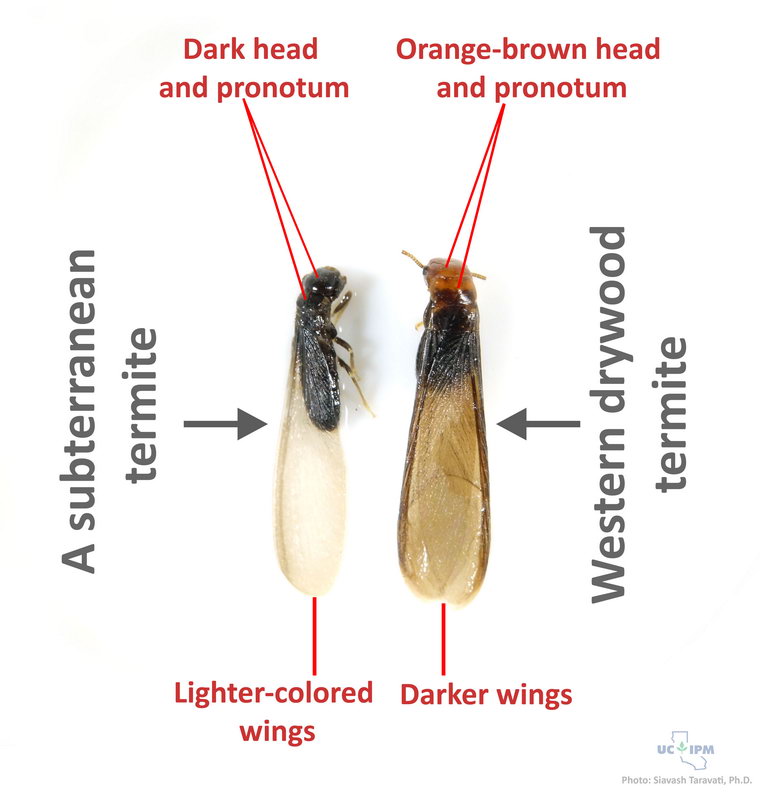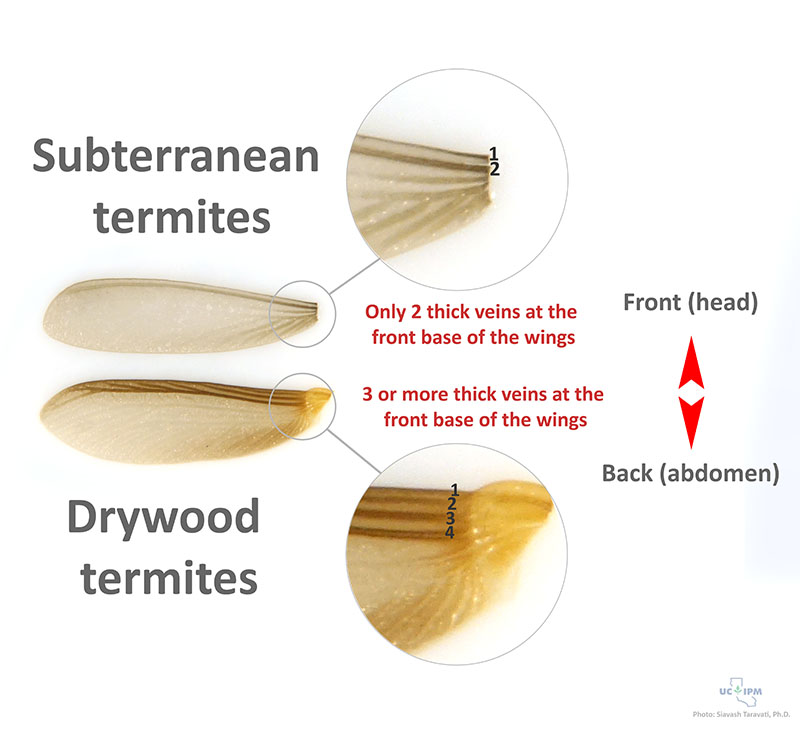First published: 5 April 2019
By: Siavash Taravati, Ph.D.
Read about various California individual pest control licenses
Drywood termites belong to the family Kalotermitidae while subterranean termites belong to Rhinotermitidae or Termitidae. Many times, Pest Management Professionals (PMPs) find piles of dead, winged termites inside or around structures on the floor or ground or stuck in spider webs and wonder if they are drywood or subterranean termites. To distinguish winged ants and termites please take a look at here: http://ipm.ucanr.edu/TOOLS/ANTKEY/antid3.html
Well, at the first look, they don’t seem much different. However, a closer look under good lighting using maybe a magnifying lens or even better, a stereomicroscope will reveal very useful morphological characters that can help you distinguish these two termite groups from each other.
Here I am going to point out a few differences between the two groups:
1-Size
Drywood termites are a little bit larger and more heavily-built than subterranean termites. However, the size difference is not that great. Look at the photo 1

2-Color
Color is not always the best reliable character to look for. However, if your specimens are not rotted or damage in other ways, you will notice that drywood termites adults have a orange-brown head and pronotum while subterranean termites have a more uniformly dark head, pronotum, and body. Also, Western drywood termite (Incisitermes minor) has smoky wings while most subterranean termite species have lighter colored wings.
3-Wing venation pattern
If you separate the wings of termites from their body (they naturally shed their wings as soon as they mate and decide to enter cracks and crevices) and flatten them on a surface, you will notice some differences in venation (vein patterns). Drywood termites have three or more thick veins at the front base of their wings while subterranean termites only have 2 thick veins.

Table 1: Summary of differences between winged drywood and subterranean termites
| Drywood termites | Subterranean termites | |
| Family | Kalotermitidae | Rhinotermitidae/Termitidae |
| Nest | Inside wood usually above the ground | In the soil |
| Moisture dependency | Low | High |
| Body size | A little bit larger | Smaller |
| Body color | Orange-brown head and pronotum | Black head and pronotum |
| Swarmer wings | -Three (3+) of more thick veins at the front base of the wings -Smoky wings (lightly pigmented) | -Two (2) more thick veins at the front base of the wings -Translucent wings (minimally pigmented) |
Other useful articles:
Sutherland, A. 2013. Identifying swarming termites. Green Bulletin Volume 4 No. 1
